
Understanding B2B Marketing Data: Insights and Best Practices
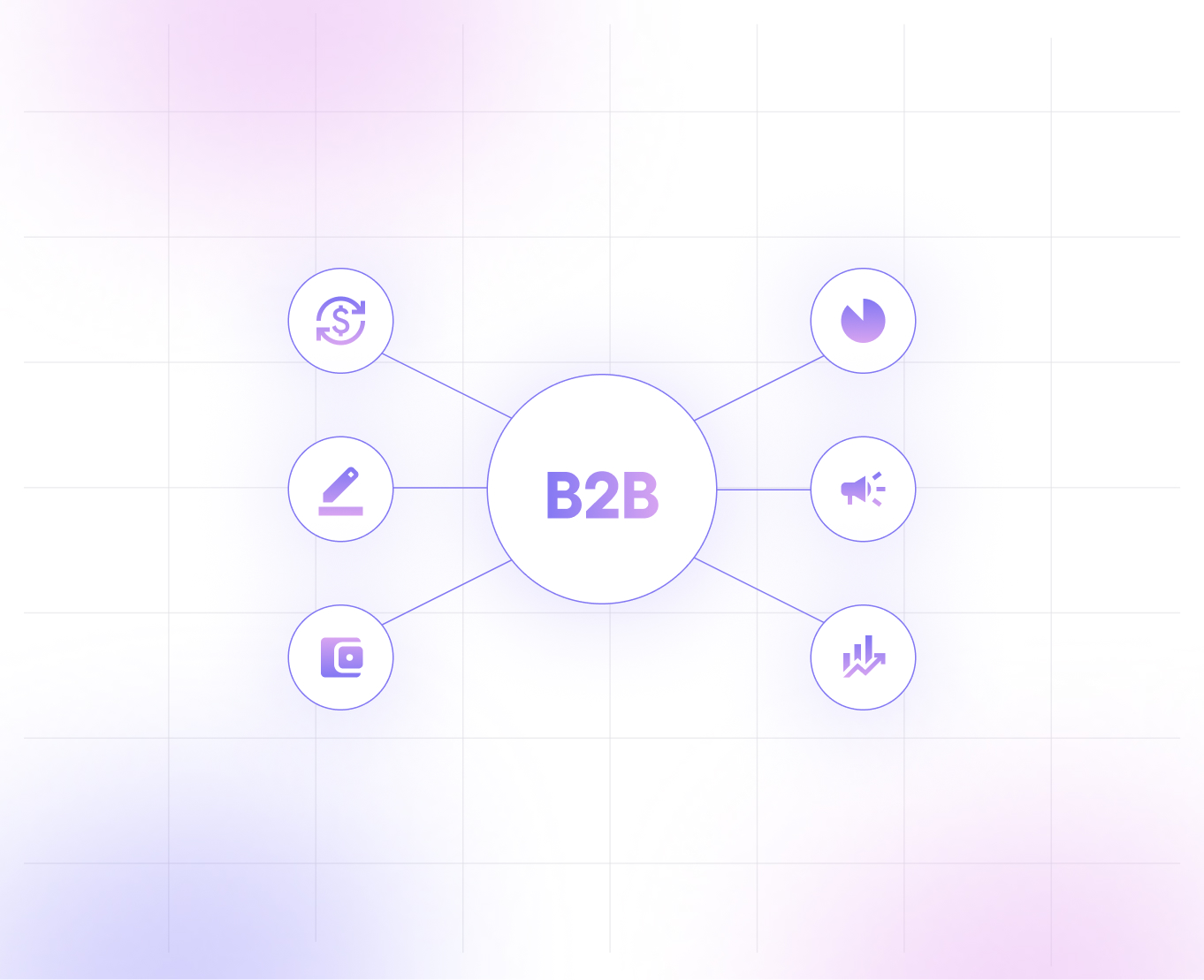
Every B2B sales strategy begins with one essential ingredient: data. From identifying high-potential accounts to crafting targeted outreach, the quality of your data directly impacts how efficiently your pipeline moves. Yet, 14% of B2B marketers report low-quality data as their top challenge in using marketing data effectively.
Many teams track intent signals, engagement metrics, and firmographics, but few know how to turn that information into revenue-focused results. It’s not a lack of effort; the issue often lies in what’s measured, how it’s interpreted, and how it aligns with the sales process.
This blog will clarify what B2B marketing data should actually do for your business and provide practical steps to help improve Monthly Recurring Revenue (MRR).
TL;DR
- B2B marketing data drives better sales by improving targeting, personalization, and sales efficiency.
- Types of data, descriptive, behavioral, transactional, and firmographic, provide valuable insights into prospects.
- Techniques like data mining and predictive analytics help uncover patterns and guide marketing decisions.
- Using data effectively boosts engagement, conversion rates, and ROI through personalized outreach and trend identification.
- Compliance with data privacy laws like the CAN-SPAM Act ensures your outreach respects user preferences, maintains trust, and protects your brand’s credibility
What is B2B Marketing Data?
B2B marketing data refers to the information businesses collect about other companies and their decision-makers to support sales and marketing efforts. This includes firmographics (such as company size, industry, and revenue), contact details, buying intent, engagement behavior, and historical interactions across various channels, including email, web, and events. Its purpose is to help identify the right accounts, personalize outreach, and prioritize efforts more effectively.
High-quality data allows marketing and sales teams to segment audiences accurately, tailor messaging, and run targeted campaigns that align with buyer intent. It plays a key role in driving qualified leads, shortening sales cycles, and improving conversion rates. When teams use marketing data with clear intent, it directly contributes to more predictable revenue and stronger MRR outcomes.
Types of B2B Marketing Data
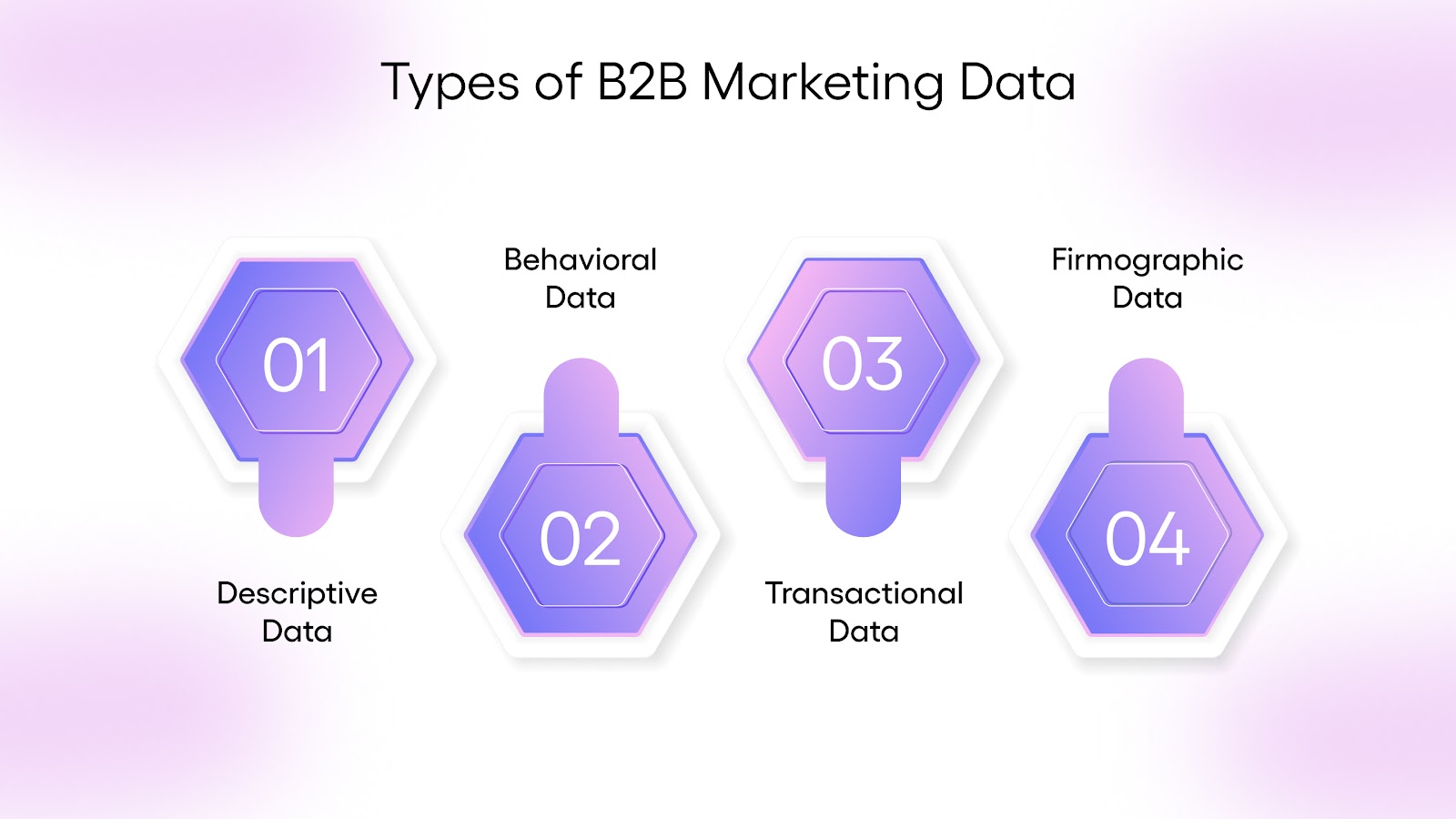
B2B marketing data is typically categorized into four core types. Each plays a specific role in helping teams identify, qualify, and engage the right prospects.
- Descriptive Data: This includes foundational company information such as industry, size, location, and years in operation. Descriptive data helps segment audiences and tailor messaging to suit different verticals, regions, or maturity levels.
- Behavioral Data: Behavioral data tracks how prospects interact with your brand, website visits, email engagement, webinar attendance, or content downloads. It signals intent and engagement levels, helping teams prioritize accounts showing active interest. High behavioral activity often indicates a shorter path to conversion.
- Transactional Data: This captures a company’s purchase history, deal size, renewal patterns, and payment cycles. Transactional insights help forecast future sales, upsell potential, and long-term account value. Sales teams can use this to identify repeat buyers and build personalized retention strategies.
- Firmographic Data: Firmographics provide deeper insights into a company’s structure, business model, revenue band, employee count, and growth stage. These attributes are critical for building your Ideal Customer Profile (ICP) and filtering out leads that don’t align with your target criteria.
Now, let’s understand how you can effectively collect and organize this information to ensure accuracy and relevance.
Recommended: Understanding B2B Sales: Definitions, Examples, and Proven Strategies for Revenue Growth.
Collecting B2B Marketing Data
B2B data typically comes from two key sources:
- Internal sources include website analytics, email engagement, past purchase records, and form submissions. These are often the most relevant and cost-effective.
- External sources include third-party data providers, industry directories, social platforms (like LinkedIn), and business databases. These help fill in gaps and scale outreach efforts.
Methods of Data Collection
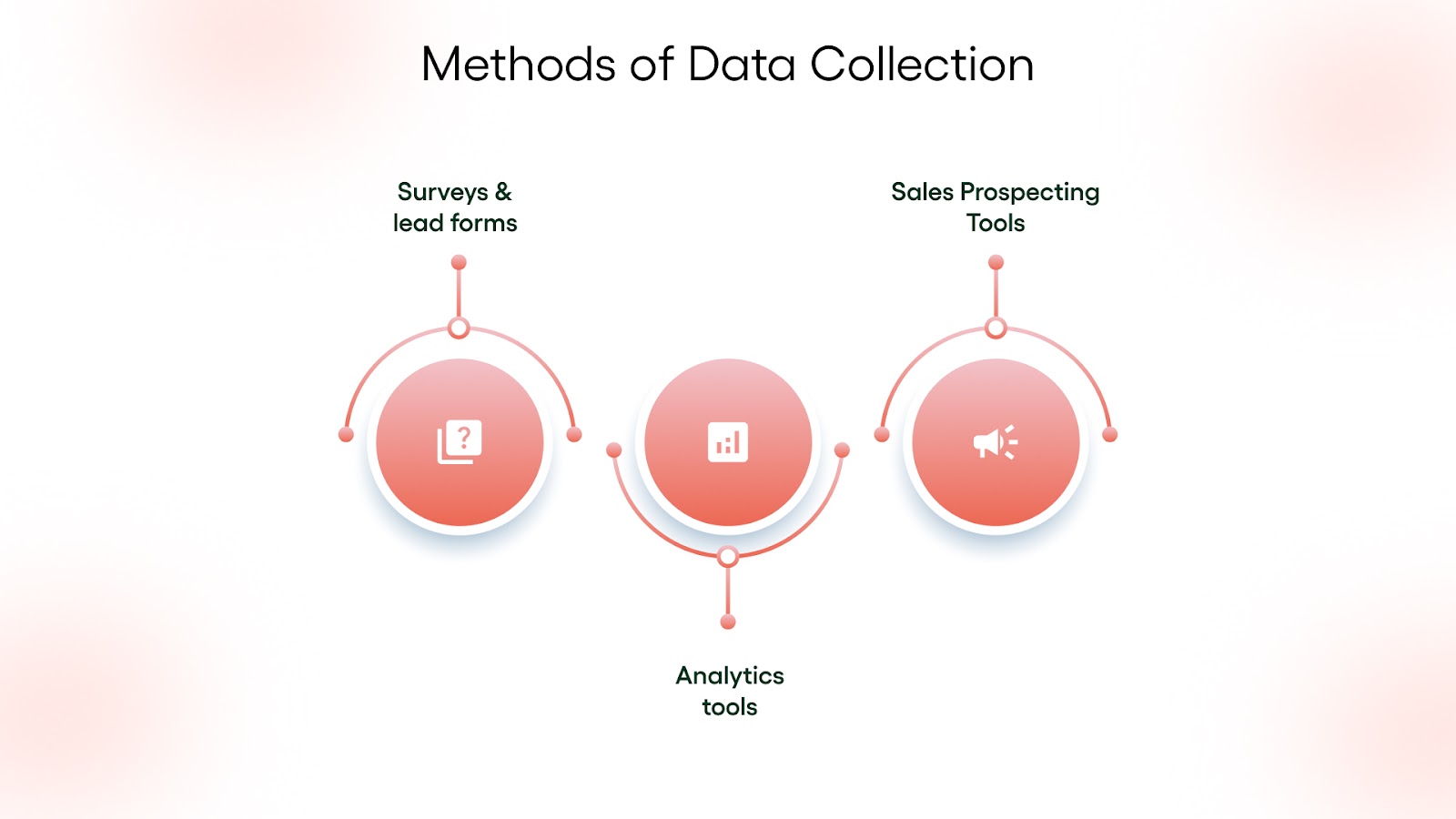
Businesses gather marketing data through a mix of manual and automated methods:
- Surveys and lead forms collect direct input from prospects and customers.
- Analytics tools track behavior across websites, emails, and campaigns.
- Sales systems and prospecting platforms help compile contact details, firmographics, and interaction history.
Accuracy and completeness at this stage are essential. Here, missing or outdated fields can reduce lead quality, impact targeting, and slow down the sales pipeline.
Now, the next step is to analyze it to uncover insights that drive smarter marketing decisions.
Also Read: A Beginner's Guide to Organic Lead Generation Strategies.
Analyzing B2B Marketing Data
Once data is collected, the next step is to make sense of it. Analyzing B2B marketing data helps identify patterns, spot gaps, and prioritize actions that move prospects closer to conversion.
Common Techniques
To extract meaningful insights from raw data, marketers rely on several proven methods as given below:
- Data Mining: Identifies trends, patterns, and correlations within large datasets. Useful for spotting which audience segments are most responsive or which campaigns consistently underperform.
- Predictive Analytics: Uses historical data to forecast future behaviors, such as which leads are more likely to convert or churn. Helps prioritize outreach and improve lead scoring accuracy.
- Segmentation Analysis: Break down your audience into smaller, high-intent groups based on firmographics, behavior, or buying stage. Enables more targeted and relevant messaging.
- Attribution Modeling: Tracks which touchpoints contribute to conversions. Helps marketers understand what’s actually driving results, email campaigns, webinars, or direct outreach.
How to Interpret Data to Drive Marketing Decisions
Raw data isn’t useful without context. Interpreting it correctly ensures better decisions across campaigns, messaging, and channel selection.
- Refine Targeting: Use engagement trends and firmographic filters to zero in on high-fit accounts.
- Improve Campaign Timing: Align outreach with behavioral signals, such as revisits or email clicks, to increase response rates.
- Optimize Content Strategy: Identify which topics, formats, or messaging styles attract the most qualified interest.
- Allocate Resources Smarter: Focus effort and budget on segments or channels that show stronger conversion paths.
With the data analyzed, you can now focus on turning these insights into actionable strategies that will directly enhance your marketing campaigns and lead generation.
Check our blog on B2B Email Marketing Strategies and Best Practices to discover actionable tips and proven techniques that drive results.
Utilizing B2B Marketing Data
B2B marketing data helps teams make smarter decisions at every stage of the sales cycle. It guides how messages are crafted, which accounts for prioritizing, and what actions to take next.
- Personalizing Marketing Messages: Data allows marketers to tailor outreach based on account characteristics, role-specific challenges, or recent engagement activity. This improves message relevance and increases the likelihood of a response.
- Identifying Market Trends and Customer Needs: Tracking patterns in engagement, content interaction, or product inquiries helps teams spot changing buyer interests. These insights can shape campaign themes, messaging angles, and timing.
- Targeting and Segmentation Strategies: With accurate firmographics and behavioral data, teams can segment audiences into precise groups, such as industry type, revenue band, or sales stage, and align outreach accordingly.
Now, while utilizing marketing data is crucial, it’s equally important to ensure that your data handling practices are secure and compliant with privacy regulations.
Data Privacy and Security in B2B Marketing
Handling prospect and customer data comes with responsibility. Businesses are expected to comply with data protection laws and maintain transparency in the collection and use of data.
- Regulations to Know: The CAN-SPAM Act sets clear guidelines for handling personal and business information during email outreach and lead generation, helping ensure respectful and compliant communication.
- Best Practices: Collect only what’s necessary, clearly communicate data usage, and maintain opt-out options. Regular audits and permission-based outreach help reduce risk.
Ignoring privacy guidelines can damage your company’s reputation, lead to legal action, and reduce trust with your target audience, hurting long-term sales efforts.
Also, check our blog on How to Start Email Marketing Campaigns for Startups for practical tips and guidance.
Challenges in B2B Marketing Data Management
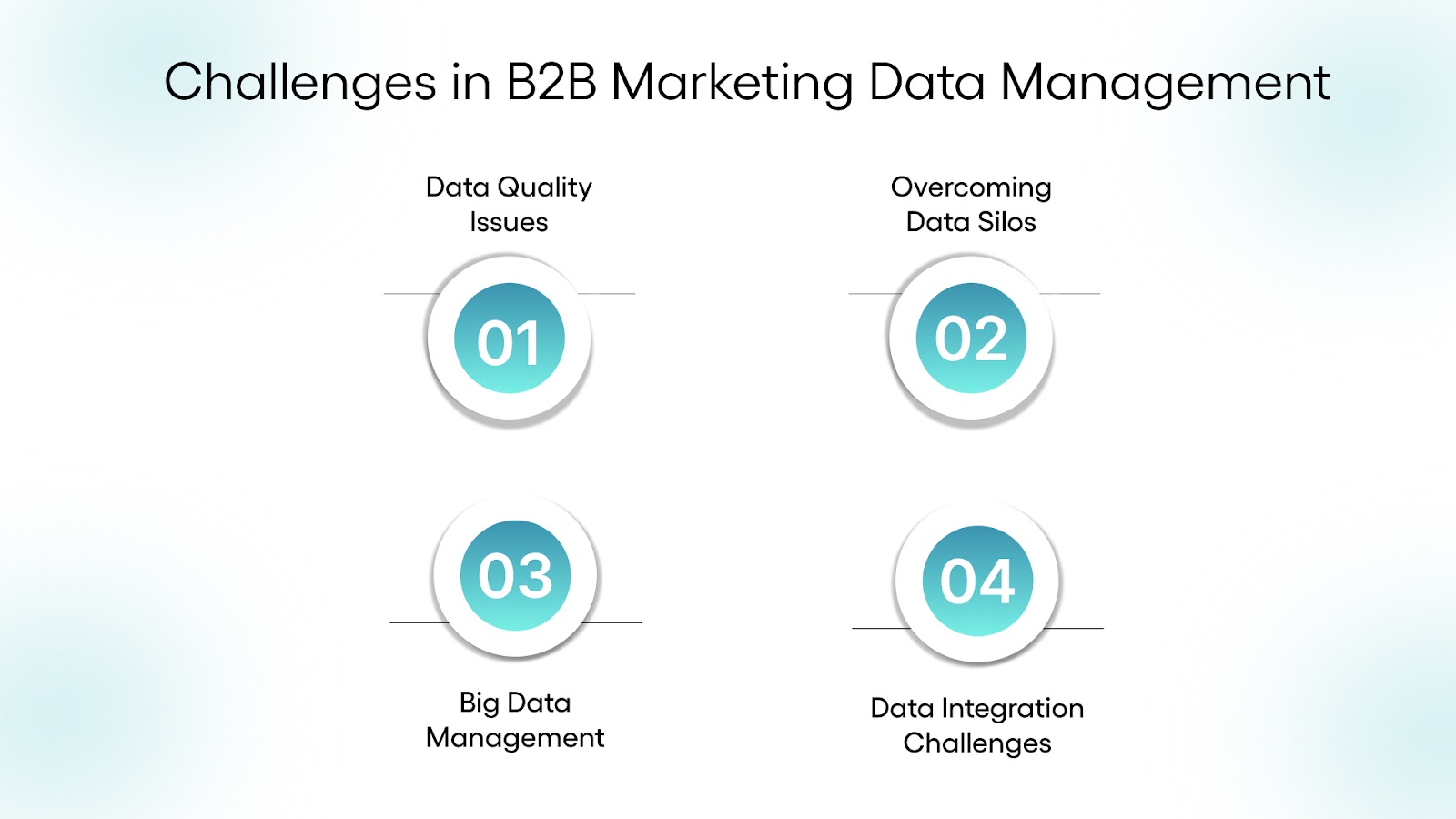
Managing B2B marketing data comes with several obstacles that can slow down lead generation and decision-making. From maintaining data accuracy to navigating complex datasets, here are the key challenges marketers face:
- Data Quality Issues: Outdated or incorrect information can undermine marketing efforts. Inaccurate firmographics, missing contact details, or inconsistent data across platforms often result in wasted outreach and missed opportunities.
- Overcoming Data Silos: In many organizations, data is stored in isolated systems, making it difficult to get a comprehensive view of prospects or customers. This fragmentation hampers collaboration and creates inefficiencies in targeting and follow-up.
- Handling the Complexities of Big Data: The volume of data marketers collect is growing rapidly. Managing, analyzing, and making sense of this data can overwhelm teams, making it challenging to prioritize insights that actually drive revenue.
- Data Integration Challenges: Integrating data from multiple sources, such as CRM, email platforms, and third-party tools, often leads to inconsistent records or gaps in data. This requires significant time and effort to synchronize across systems.
To address these challenges, here are some best practices to make the most of your B2B marketing data.
Best Practices for Effective B2B Marketing Data Use
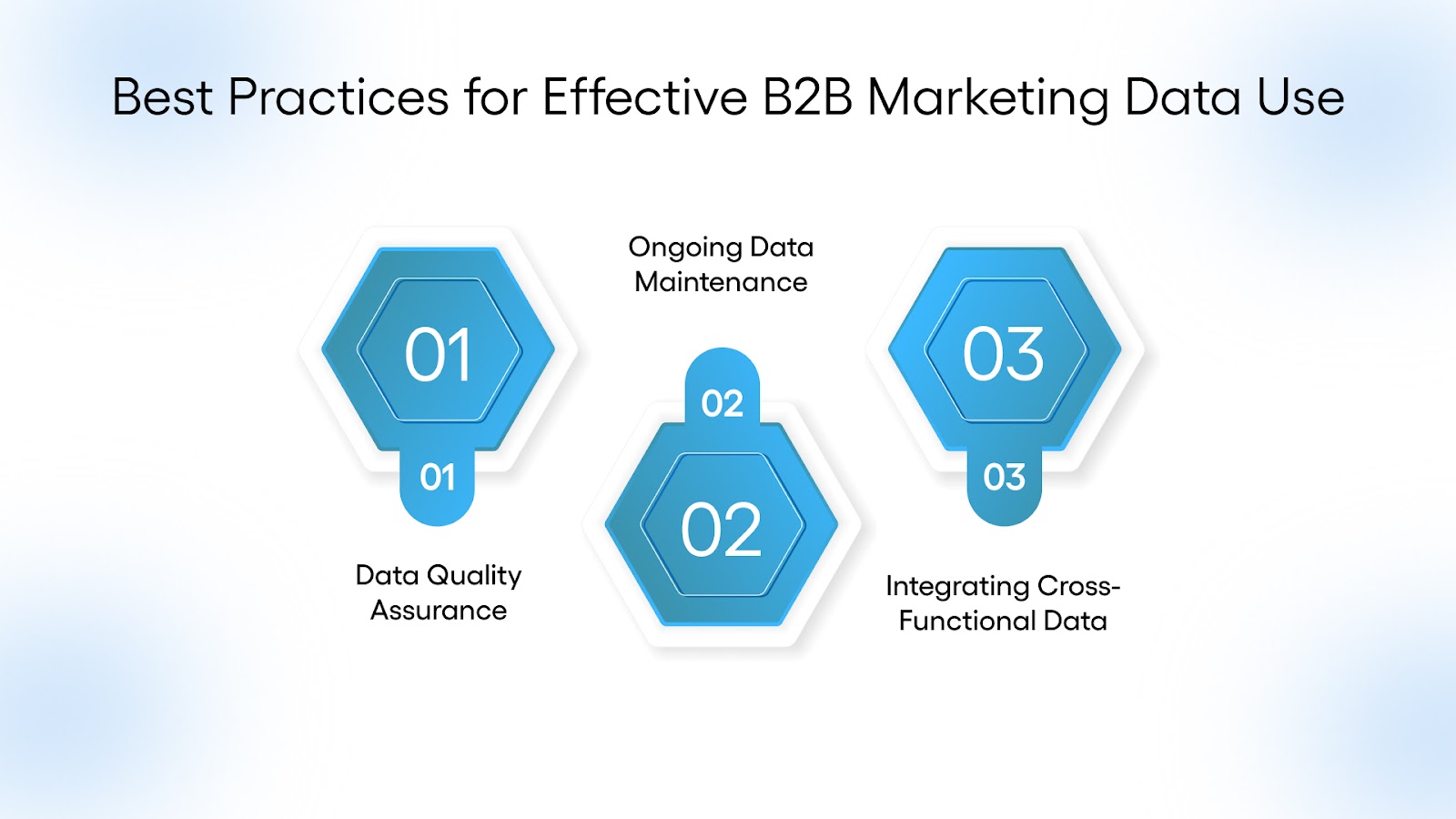
Consistent and accurate use of marketing data helps drive better decisions across the sales process. These practices ensure data stays reliable, relevant, and actionable:
- Maintaining Data Integrity and Quality: Establish clear data entry rules, standardize formats, and conduct regular reviews. Regular list cleaning helps remove outdated or invalid contacts, reducing duplication, preventing errors, and keeping contact records consistent and reliable.
- Continuous Data Monitoring and Updating: Keep prospect and company information current. Set up review cycles to identify outdated details and replace them with verified inputs from trusted sources.
- Integrating Cross-Functional Data: Bring together data from marketing, sales, and customer-facing teams. Shared insights, such as previous interactions or lead engagement, help support more informed outreach and better account planning.
Although these best practices are proven to drive better results, managing B2B marketing data can still be a complex and time-consuming task. What if there were an easier way to implement these strategies and maximize your data’s potential?
Let TLM Take the Complexity Out of B2B Marketing Data
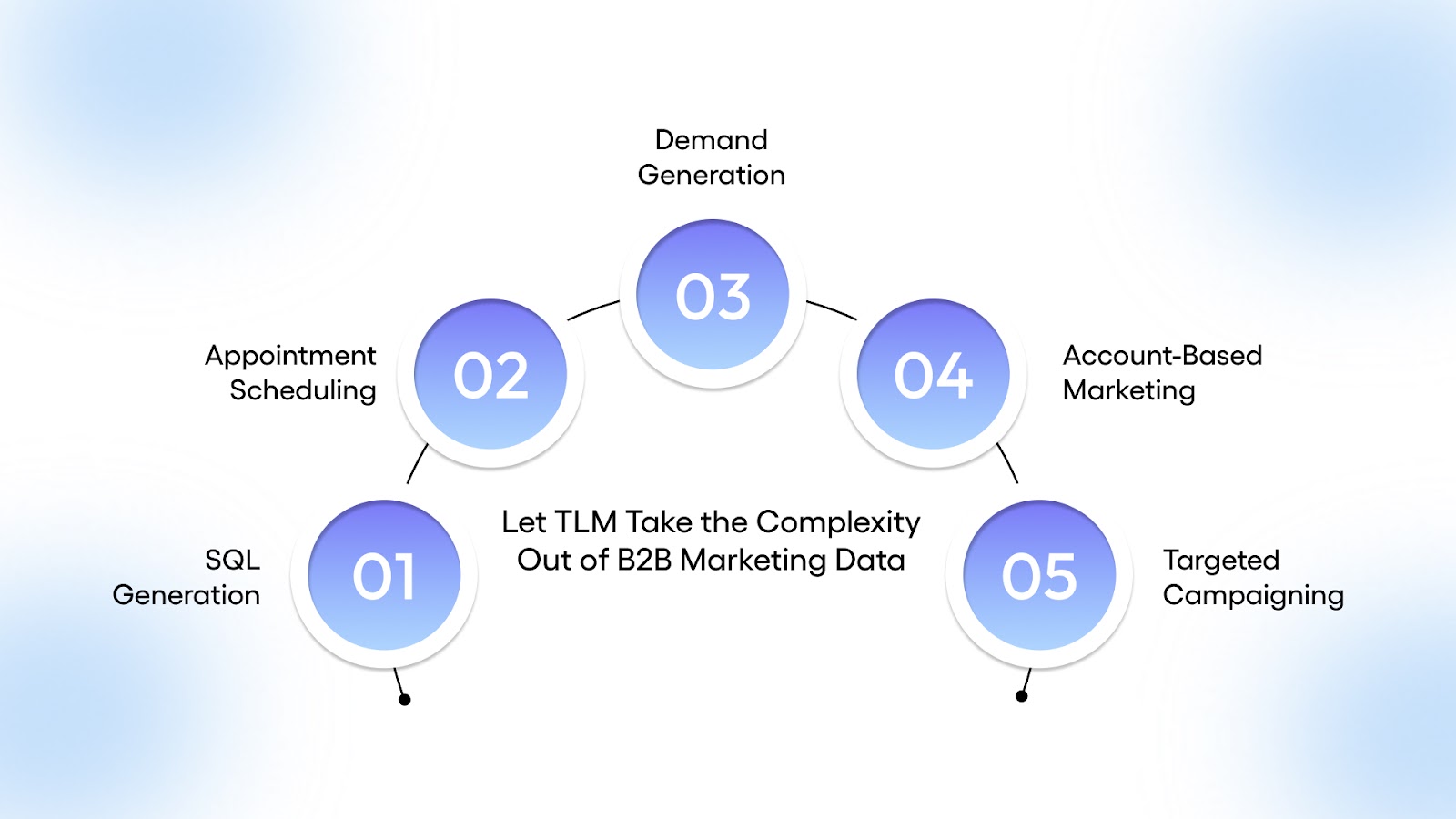
B2B marketing data is a powerful tool, but managing and leveraging it effectively can be overwhelming. With numerous data sources, techniques, and best practices, it’s easy to feel lost in the details. That’s where TLM comes in. If analyzing and utilizing your marketing data feels too complex, let us take the burden off your shoulders.
With 9 years of expertise in lead generation, appointment setting, and data-driven marketing strategies, TLM (The Lead Market) specializes in turning raw data into actionable insights that accelerate sales and drive revenue growth. Here’s how we can help:
- Sales Qualified Lead (SQL) Generation: We help identify and qualify leads that are most likely to convert, ensuring your sales team spends time only on the most valuable prospects.
- Appointment Scheduling: We streamline the scheduling process, ensuring that your sales team is meeting with the right contacts at the right time, improving efficiency and conversion rates.
- Demand Generation: Our multi-channel strategies nurture leads, keep prospects engaged, and build a steady pipeline of interested buyers ready to convert.
- Account-Based Marketing (ABM): We create highly-targeted campaigns for high-value accounts, making sure that your outreach is both relevant and timely.
- Targeted Campaigning: We run campaigns tailored to your specific industry and buyer personas, ensuring your message resonates with decision-makers.
Want to see how accurate data can drive real sales growth? Schedule a call with TLM today to discuss how our data-driven strategies can streamline your lead generation, appointment setting, and sales pipeline management.
FAQs
1. What is the importance of B2B marketing data?
B2B marketing data helps businesses identify high-potential leads, optimize outreach, and improve lead conversion rates. By leveraging accurate and comprehensive data, companies can craft more targeted and personalized campaigns.
2. What are the different types of B2B marketing data?
The primary types include descriptive data (company size, industry), behavioral data (engagement levels, purchase history), transactional data (sales records), and firmographic data (revenue, number of employees).
3. How can businesses analyze B2B marketing data effectively?
Techniques like predictive analytics, data mining, and segmentation analysis help businesses uncover actionable insights. These methods allow you to forecast future behavior, identify patterns, and refine your marketing approach.
4. What makes TLM's B2B marketing data services different?
TLM specializes in turning raw data into qualified leads, actionable insights, and measurable outcomes. With services like SQL generation, appointment scheduling, and demand generation, TLM helps businesses effectively leverage data to drive sales and revenue growth.






